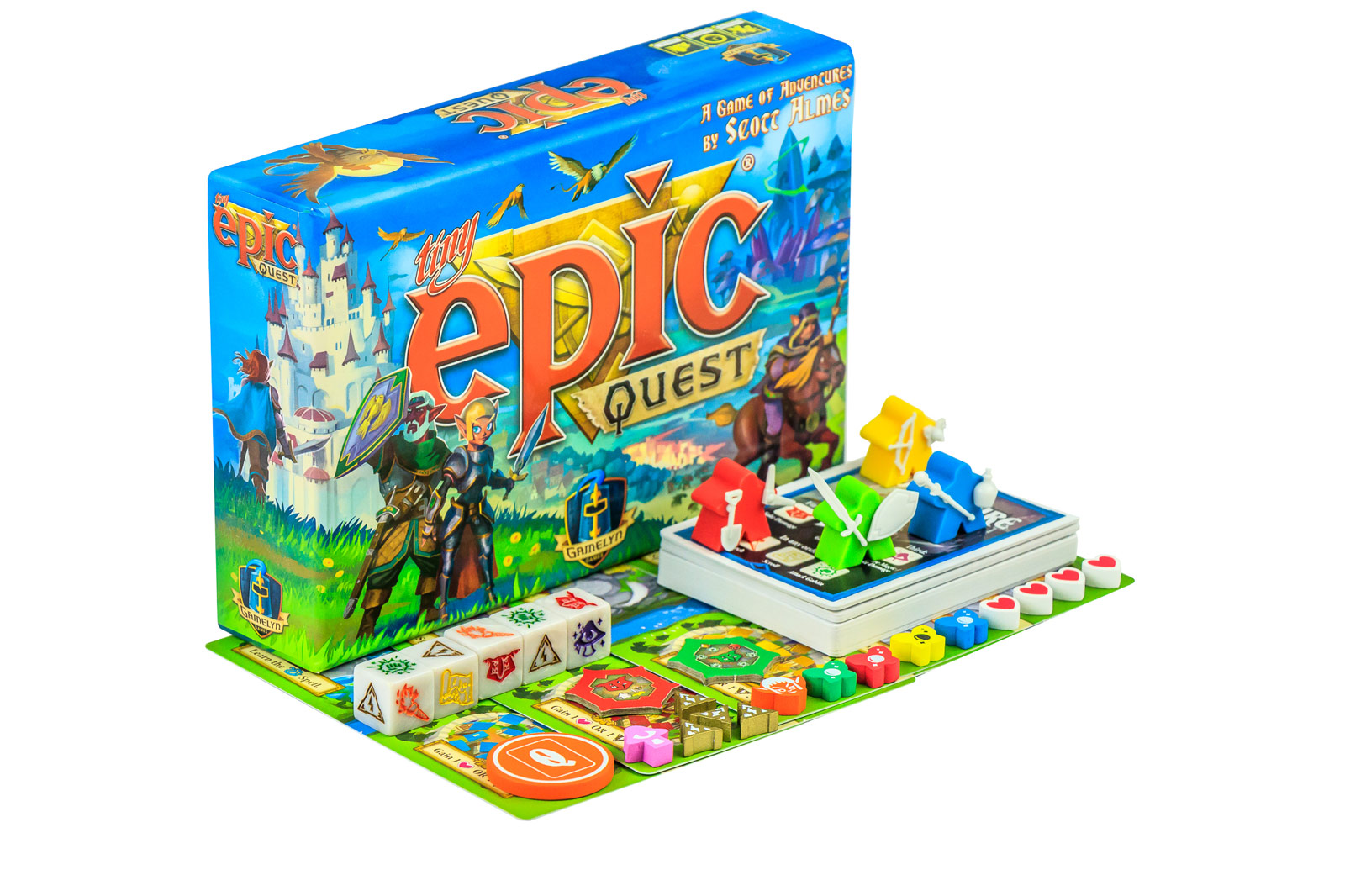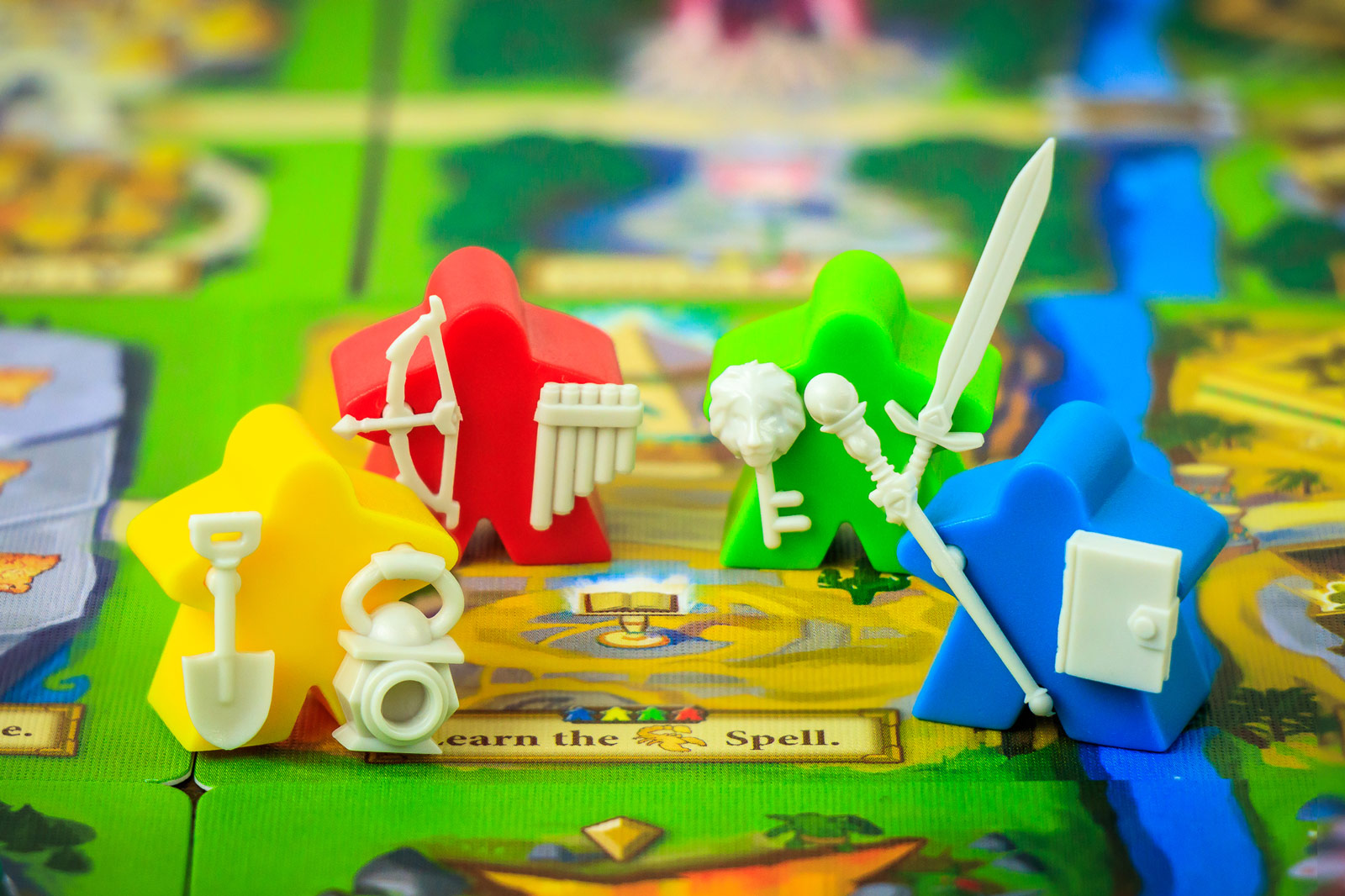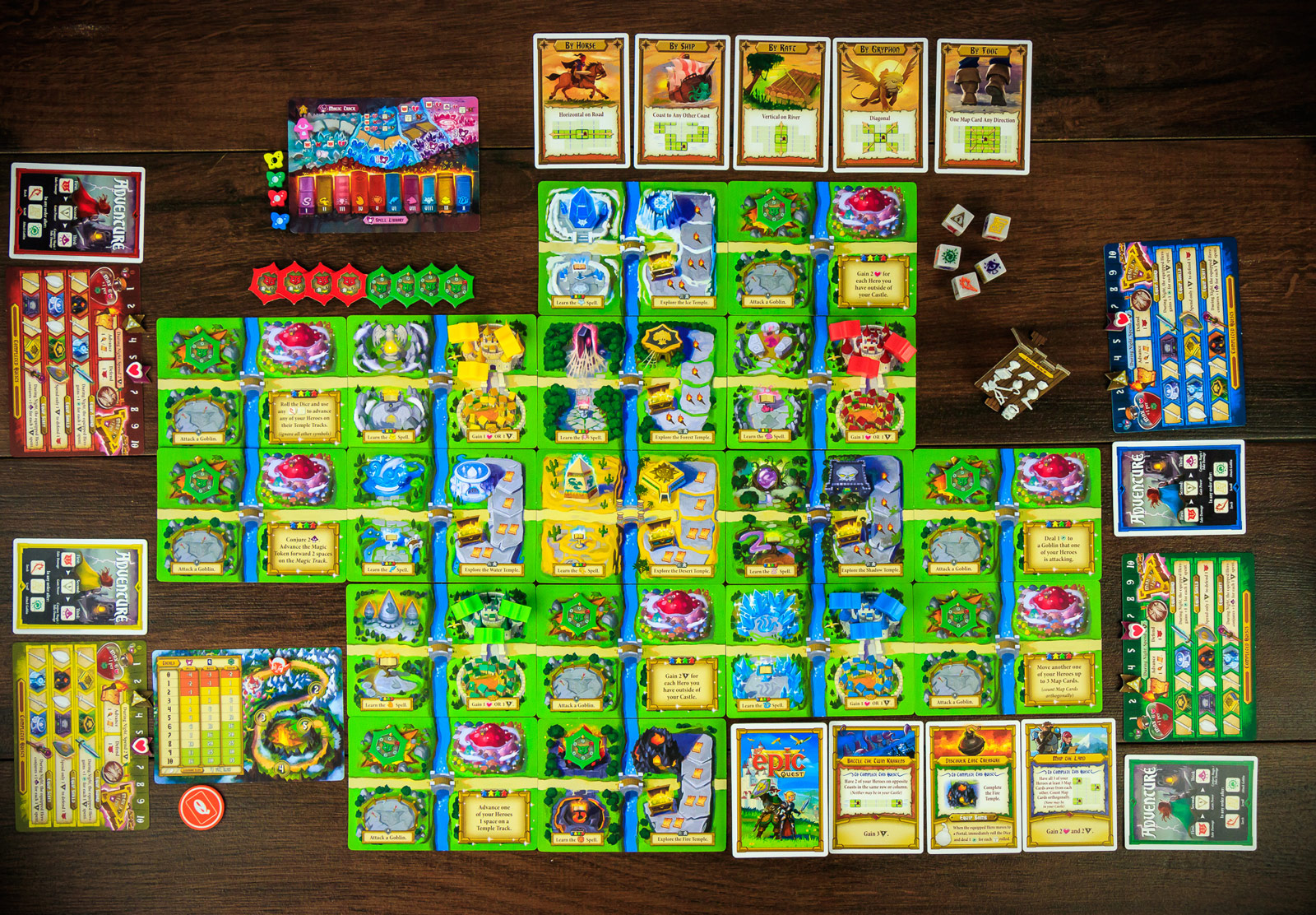
Tiny Epic Quest is one of a series of "Tiny Epic" games developed by Gamelyn Games. With six games and three expansions released under this moniker, Tiny Epic Galaxies remains the most beloved of the series, the others languishing in mediocre reception. We had the good fortune of reviewing Tiny Epic Quest, as it seemed most fitting of RPGFan's coverage: a title that emphasizes learning spells, slaying goblins, exploring temples, and of course, questing.
On the surface, Quest is visually overwhelming. After creating the randomized map, the beautiful artwork can make the board feel busy. Upon learning the game, what is initially exhausting becomes simple. Maybe too simple. While plentiful locations await plundering or thwarting, the fact is, players will be entering obelisks to learn a low-level spell, basically excluding the other ten or so obelisk spaces. The goblin spaces are the same everywhere. Temples add neat variety, but many players will be going into temples that currently have a quest. Finally, grottos offer ho-hum bonuses that enable players to gain some quick healing or easy movement. The board itself offers few interesting choices.
You might be thinking, "Hey, learning spells sounds fun, and they can help me adventure later on, right?" Well, not so much. "Spells" are merely dressing for points. They increase a stat that allows for easier exploration and defense, but there's really nothing flashy about learning a spell with a wolf or bear symbol. Just the same, exploring temples and battling goblins is a simple roll-off.

Dice are key to the game, which occurs in two phases. The meat of the night phase is the "press your luck" mechanic, which involves people rolling dice around the table, risking death in order to meet an objective. This offers some interesting decisions in terms of when to use power and when players should bow out, but the intensity is shallow at best.
The day phase, I would argue, is the more thought-provoking part of the game. Players each have three workers that traverse the lands in four turns per round (over the course of five rounds total). With these meeples, the aforementioned locations can be entered one meeple at a time. A few things to consider: 1) in addition to temple quests, the game offers worker movement quests, and 2) movement is determined by one of five movement cards that everyone gets to use, à la Puerto Rico and San Juan. So, if player 1 picks up the griffin movement card, he and all other players can each move one meeple diagonally as far as they wish. Then, if player 2 chooses, she can select the raft movement card that allows all players to move a meeple as far as they want vertically. In this way, players will have to think of how best to organize their workers so that they can have meaningful night phases while also satisfying worker movement quests.
In terms of gameplay, that's about it. A game can take between 30 to 60 minutes depending on the group and everyone's familiarity with Quest. Although it allows for anywhere from 1 to 4 players, the best experience occurs with three or four players, in my opinion. This is because the day and night phases are far more intense, with more to lose and more to exploit if an opponent overlooks something. Unfortunately, by rounds four and five, the quest deck and night phases can feel a little barren if the group is especially efficient and lucky with die rolls.

I'd be remiss if I didn't mention the component quality. While I have already spoken about how beautiful the game looks, items earned through quests slot into meeple hands, making each worker appear as if it's wielding a sword and shield — or lantern and amulet — as it travels. This adds some nice flavor, and it's a simple touch I haven't seen many games use.
Tiny Epic Quest is for "press your luck" fans alone, I fear. While it's definitely on the lighter side, it boasts a game time and visual complexity incongruous with its purported mission. In my personal experience, the game is tiny when it should be epic, and epic when it should be tiny. Its identity is conflicted, and with some tweaking, I feel like a more appropriately light or more intense experience could have been developed. Tiny Epic Quest seems to try to do both, and for that reason, it falters when it could have found stronger footing.
Tiny Epic Quest Official Website